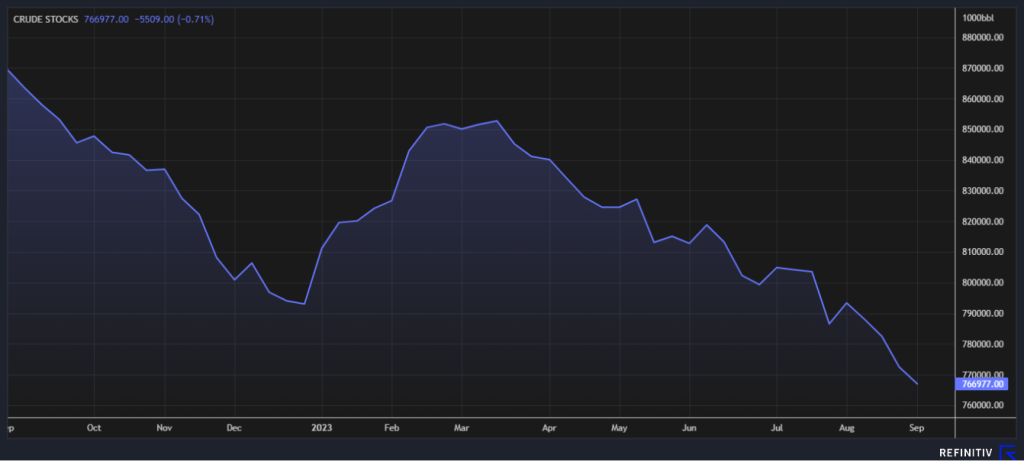Global crude oil prices maintain at a higher level as investors are eyeing major economic data due to be released later this week for any signals to the world’s economic outlook.
The international benchmark Brent crude rose above $90 level for the first time since November last year, while the U.S. West Texas Intermediate rose to nearly $88 a barrel for the first time in nearly ten months. The acceleration came after Saudi Arabia and Russia announced that they would extend voluntary supply cuts for a combined 1.3 million barrels per day until the end of the year.
U.S. crude oil inventories have been edging lower since mid August, seeing continuous draw amid hopes for higher demand from Covid-19 recovery. The latest release on September 7, 2023, saw the inventory emptying by another 6.3 million barrels, which was lower than the previous month for a draw of 10.58 million barrels, but still way above the forecast of 2.06 million draw.
More indicators showed that Western countries are struggling to fill the tank before winter comes. Total US crude oil inventories, including the Strategic Petroleum Reserves (SPR), fell below 800 million barrels since late July and now has hit 767 million barrels for the first time since 1985 just a few years after the SPR was established.
Due to this huge draw, the U.S. now has only 46 days worth of supply in total reserves, which is an all-time low.
Three years prior, the U.S. made a record high of 92 days worth of supply in inventories, which is twice as much as the current level.
Oil prices could maintain at this level throughout this year as Europe and the US are entering winter, raising concerns to the central bank of how to position its monetary policy for a softlanding as higher oil and gas could contribute to a spike in inflation data.
US inflation is expected to rise to 3.6% YoY in August, higher than a 3.2% YoY increase from the previous month.






